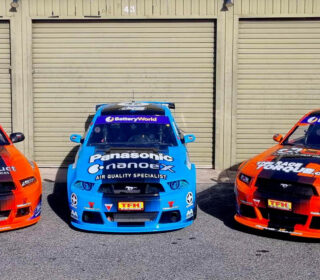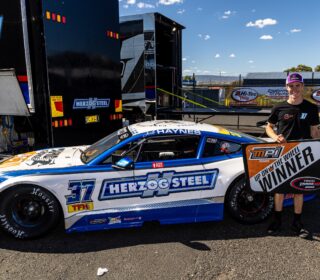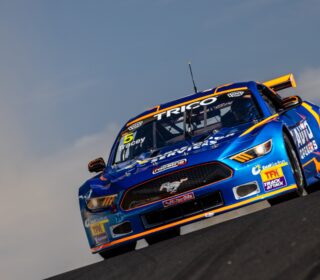The Bend’s Elevating Experience
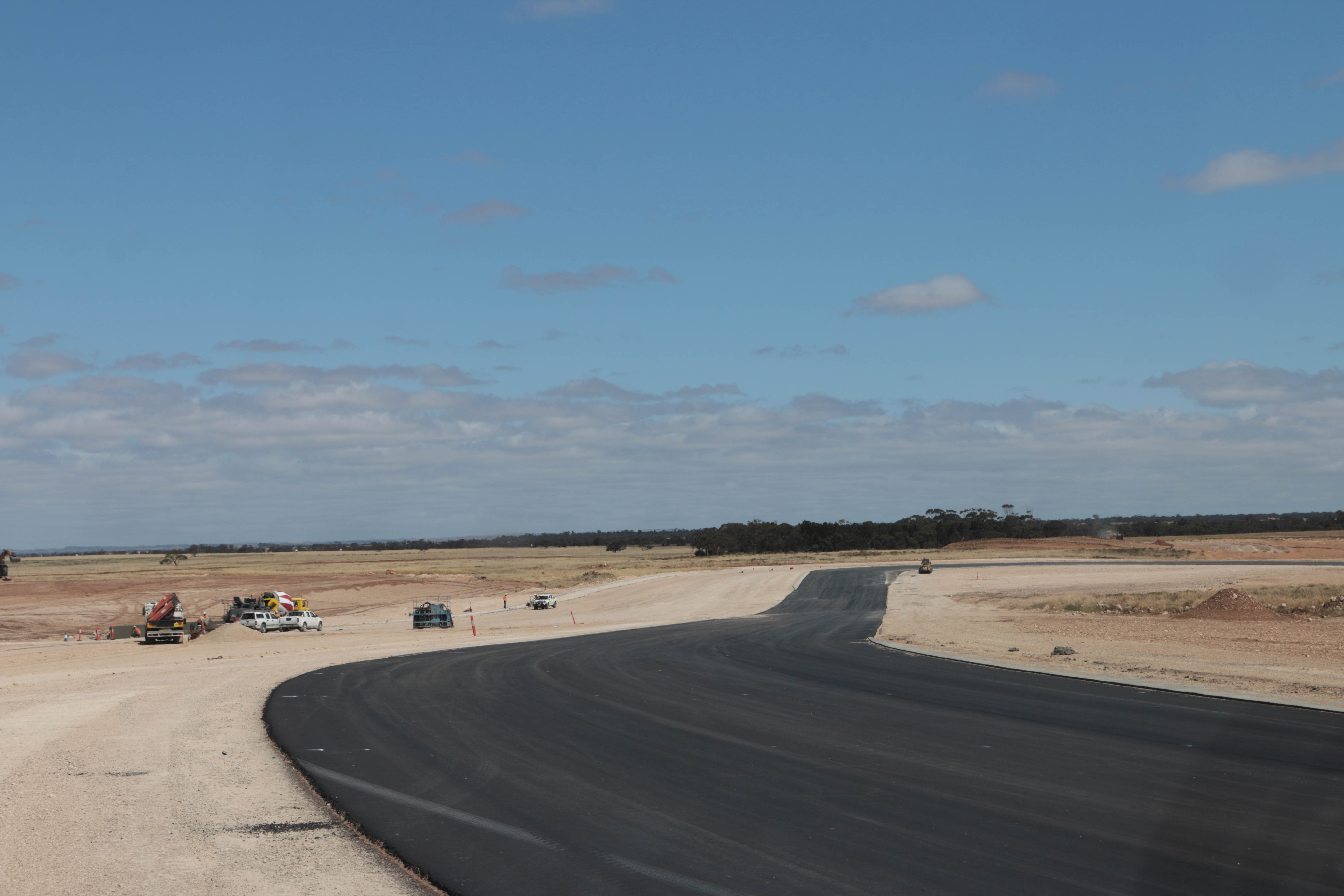
ALL of the great circuits have elevation change. It is a near universal constant that for a circuit to achieve some form of notable character that they need to include some form of incline or decline in their makeup.
Certainly the classics – Spa, Bathurst, the Nurburgring – have it in spades. Phillip Island is characterised by its flow across the gentle bluff that extends out towards Bass Straight in Victoria’s South East. Oran Park was built on the side of a natural valley, it’s pit lane overlooking the rise and fall of the run down towards the old Sutton’s corner and the famous dog leg.
It is only natural, then, for people to query the introduction of said rise and fall whenever a new circuit is built and, in their defence, perhaps the most recent iteration of Formula One circuits (or indeed those built just outside of Ipswich) built in deserts – which have a habit of being as flat as the proverbial pancake – has conditioned them to expect anything new to be built with the same spirit level.
This is perhaps an explanation (though not an outlet for forgiveness, for in this case ignorance is most certainly not bliss) for the commentary on social media when the Supercars were locked in for their August, 2018 slot at The Bend Motorsport Park.
A 2D render of the circuit from above and a 3D computer game simulation were the basis for judgement.
“All people have seen so far,” Paul Trengove, Manager Motorsport Development & Operations at the venue says, “Are a few photos and a computer sim of the circuit. I don’t know how they can tell there’s no elevation change..” he tails off at the end of the sentence, pondering like many the legitimacy of claims made by those who troll the internet to impose their opinion on anything from circuit design to the adherence to cannon by the latest iteration of a cult TV show.
“When they get here I think they will be surprised.”
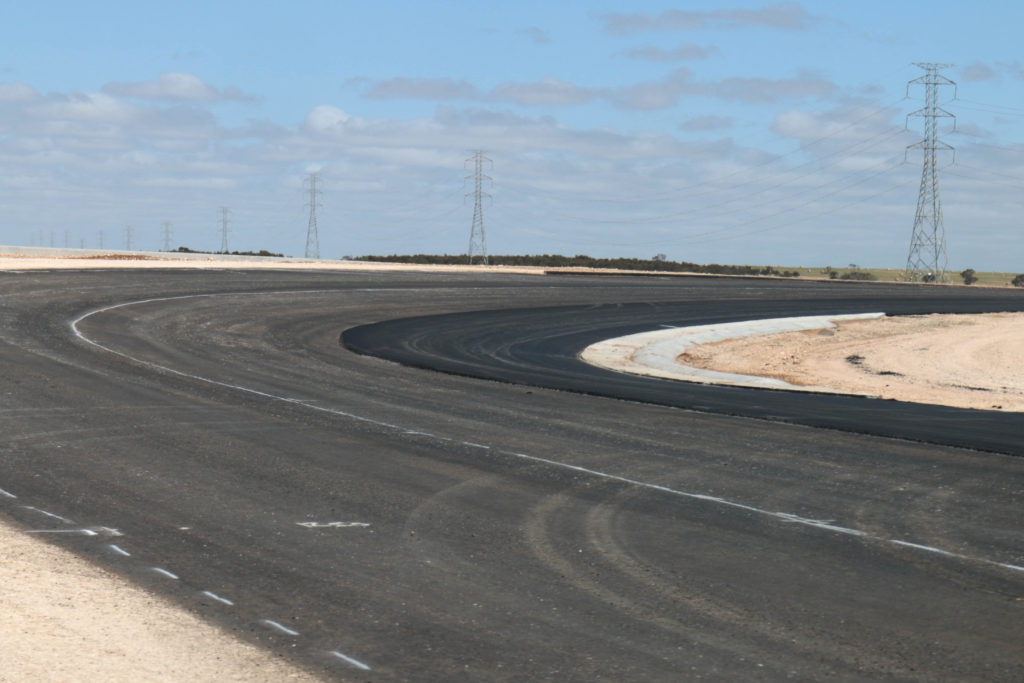
These few online sceptics, as uninformed as they are, may rest assured for The Bend has elevation change in spades. No, they are not as dramatic as the plunge from Lukey Heights to MG nor as notable from the pit lane as that old Oran Park magic.
The Bend has elevation that is more subtle; a soft flow that rolls gently across the shallow peaks and troughs of the Murrayland Limestone on which it is built, a mere hour up the freeway to the South East of Adelaide.
That elevation plays a significant role in how the circuit was constructed – and convinced.
“At first the circuit was planned to be constructed at the corner of the property, near the corner of the highways,” Trengove adds, pointing in the general direction of where the Mallee Highway (the main road to Sydney) intersects the Dukes; Highway One to Melbourne.
“The plans were drawn and ready to be submitted to the FIA but the directors were out at this side of the property one day and saw the rise and fall of the land and said ‘how can we not use that!’, so we started again in the current location.”
And don’t for a moment think that the circuit is the folly of a few without a clue.
Those behind the circuit, brothers Sam and Yasser Shahin, are both racers and have both won at a national level. Our guide today, Mr Trengove, was a front runner in Formula Holden and a class champion in Formula 3s back in the day. Mark Warren, the circuit’s General Manager, ran the Adelaide 500 for several years. And so on..
So yes, they have the finances available to build it, but this is a circuit to have been designed and constructed and the process managed by people who race. Racers.. Not a government committee nor a rich Sheikh.
**
A LAP of the 4.9km International Circuit, the one to be used by the Supercars next August, is an unquestionably cool experience.
Even the pit straight rises several meters before the braking zone at turn one, an on-camber right hander that immediately doubles back into a quick left flick. From there cars will scramble to stay to the left of the road for the right-handed turn three braking zone. Three is a ripper corner; severely cambered into the apex, it will be a ‘chuck it in and hope’ approach when the camber gives people confidence and an early throttle application on exit.
What comes next is a roller-coaster: Climbing, turn four is a blind on approach, flat out right-hander that almost straight afterwards turns back on itself at turn five. Think Hayshed at Phillip Island or perhaps bits of Spa Francorchamps. It will be fifth gear territory in serious cars.
Then there’s a long run downhill gently downhill and here the creators – the term ‘designers’ doesn’t seem appropriate for what has been a quite organic process in shaping a layout that continued to evolve right up until the tarmac was laid – have played another trick.
From it’s already wide 12-metre width, the circuit gradually extends to become 15 metres across before braking for the tight, second-gear turn six left-hander.
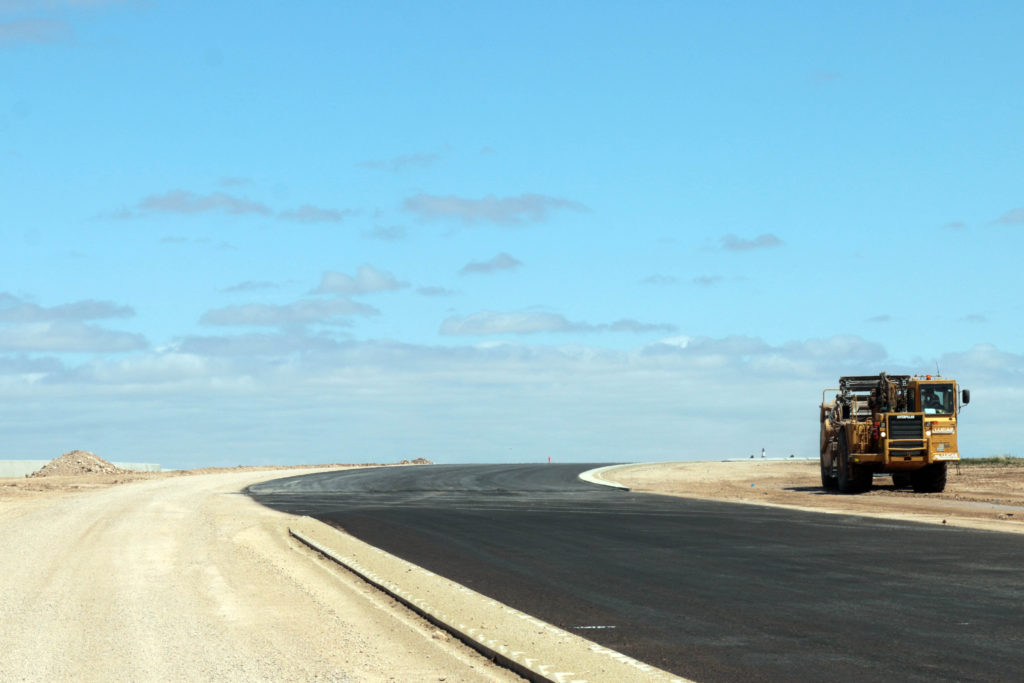
The tricks don’t stop at width, either – six is a fascinating 180-degree long hairpin that starts with an off-camber entry, becomes neutral mid turn and shifts to positive camber on exit, allowing cars to pass on entry but fire out quickly on exit. Again, this is all stuff you can’t see on a map.
“It’s the changes of camber, of width and the use of the natural terrain that will add to the character of the circuit,” Trengove adds, carefully avoiding driving on sections of freshly-spread bitumen that cuts through the almost stark white surrounds like a river through a desert.
The circuit climbs gently next towards a series of corners that may well turn out to be the showpiece of the whole thing, a series of four right hand sweepers that will be ever quicker and ever more challenging the further through the lap you go.
Seven is quick but looks relatively simple. Eight, however, drops down after the apex before funnelling down the briefest of straights before turn nine. Getting the exit kerb here will make you pay and upset what is very much a momentum section of the circuit.
Turn Nine looks awesome; it’s like the kink before the final turn on the Adelaide 500 Parklands circuit and will have the cars properly loaded on their left hand side. The road continues to drop gently here before raking upwards again just prior to turn ten – meaning the cars will compress on their suspension and throwing in a serious element of good engineering and vehicle setup nous.
Ten is more of the same but by now not only will the cars be on the edge of their load levels, they’ll be properly quick, too. Ten also spits cars out onto another short, short straight before a quick left-hander at eleven. It’s a similar shape to the previous four but obviously in the other direction; and there’s not much space between ten and eleven to re-position the car for turn-in.
The potential for drivers to get it wrong on the exit of the quad rights and mess up this next sequence will be significant.
At the same time that they are turning, cars will be braking for twelve, a reasonably simple right hander that starts the run back towards the pit building. It is here that you are at the most remote from the enormous, 20-meter tall pit building that hovers off to drivers right. Interestingly, the pit buildings and lower floors of the hotel level are almost out of sight here – another pointer towards the undulation of the place.
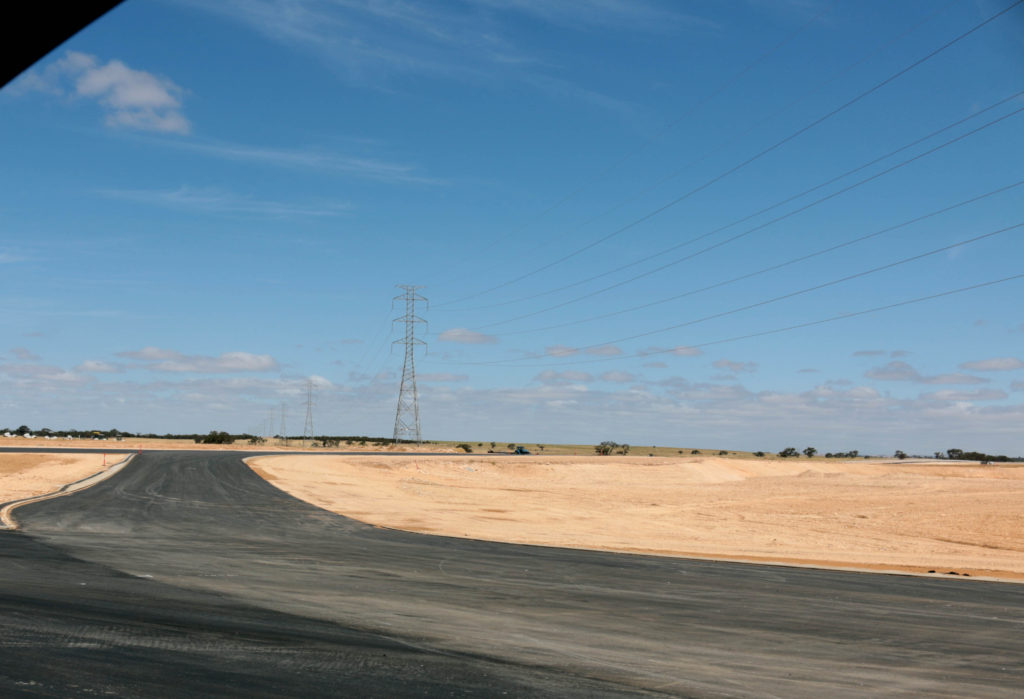
Putting a relatively benign corner after five serious arm-twisters in a row is a good call; it may well beckon those filled with bravado and confidence to have too big a shot and make an error, setting up an overtake opportunity for the next section.
That next section is turn thirteen. It’s uphill and completely blind on the right-handed apex. Drivers will brake late, turn in and pick what looks to be a late apex. At the base of this corner, only the top two levels of the enormous tower behind are visible. This has a Lukey heights feel to it and has all the hallmarks of being one of those great ‘corners with consequences’ that if you get it wrong, you’ll end off in the grass somewhere half way back to the Murray River.
Fourteen and fifteen are left-handers just made for spectating, a large grass (or, it will be) bern on the inside set to provide 180-degrees of viewing over much of the circuit.
Sixteen instantly flicks right over another blind crest, quick, and down a hill towards what will be another great overtaking opportunity at the next right-hander.
Again, the road widens on the entry to promote passing, but this corner will be dive-bomb central anyway and will encourage late braking.
The final corner has significant camber and will be another to reward commitment – and punish mistakes because if you get this wrong you’ll be mugged by the time you traverse the next 1000 meters or so before turn one, looming off in the distance of an afternoon haze of heat and construction dust.
**
BRANCHING off from the International circuit is the GT circuit, a longer loop that adds about 2.8 kilometres to what is already the second longest lap in Australian Motorsport.
And where the International circuit is likely to be challenging and entertaining, the longer form has the capacity to one day be considered an epic.
“The GT circuit doesn’t need to adhere to the FIM (Motorcyling’s version of the FIA) regulations so we’ve been able to go quite extreme with some of the cambers,” Trengove explains, as we stare at what looks to be a third or fourth-gear corner.. with what must be nearly a full 100 cm fall from outside of the bitumen primer to the apex kerb.
“It’s not so much as a camber as banking, and a lot of the corners on the GT circuit have that.”
In the haze of construction and with some of the walls and circuit boundaries yet to be fully defined, it is easy to become disoriented when negotiating the full 7.7km circuit. Like the first time you drive the Nurburgring on the PlayStation, this will take some time to learn and fully appreciate the detail work that has gone into designing some of the corners.
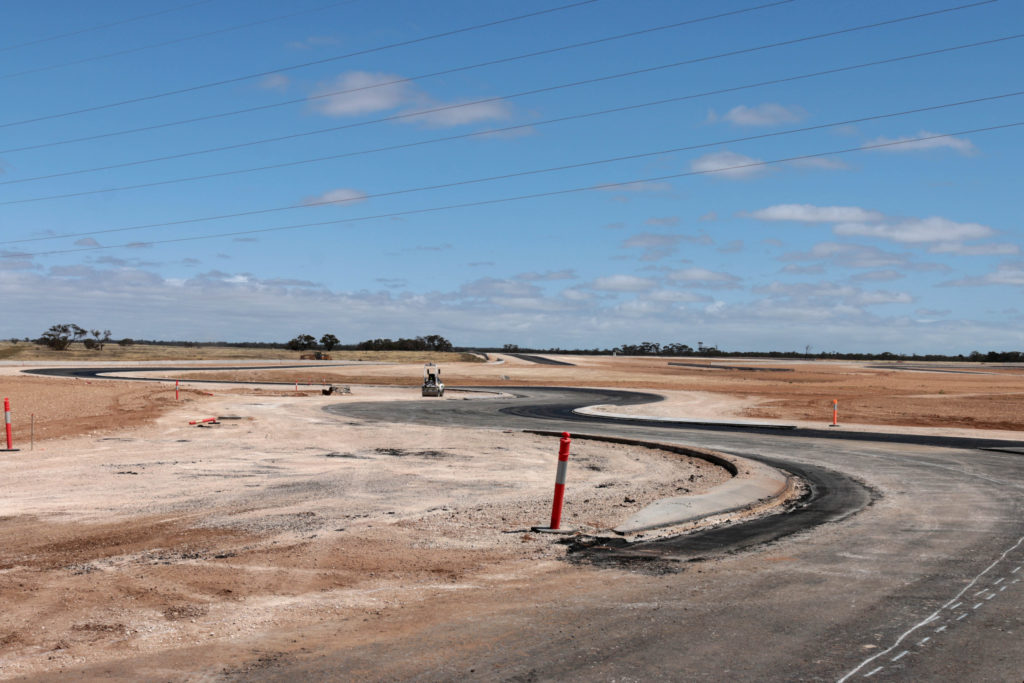
“This area was designed more with a driver in mind. We’re a long way from the pit lane – though you can still see it from there – so this wasn’t so much about spectators but about making it a great driving experience. It will still make for great viewing but the driving challenge is the big story here.”
There’s some spectacular tarmac being laid here, with elements of Suzuka’s epic first sector interspersed with more technical elements that could have been lifted from a kerb-lined street circuit – only you would have to experience a significant ‘off’ to impact the concrete here.
The driving challenge will be varied, alright, and like the International circuit it gently undulates across the flow of the property’s Eastern edge.
At the Southernmost point of the GT circuit, there is another pit lane and paddock area which will allow the Eastern side of the complex to operate independently from the Western side, that features the immense pit building, hotel and welcome centre.
**
IT is easy to sit back in an armchair and criticise, but what they’ve done here is build a racetrack with an organic rise and fall; one that is almost instantly imbibed with a sense of character and several corners that will offer their candidacy to be added to those labelled ‘serious’.
The Bend being judged as a truly great circuit will be a matter for history because Great things take time. Phillip Island did not instantly become great, it earned it via the achievements of those racing on it and the memories recorded by those watching.
The Bend will be no different.
Are we biased? Probably, god only knows there’s certainly an element of parochialism amongst locals about this circuit. It is a truly great thing for Motorsport in South Australia. Done properly, it has the potential to generate an Adelaide Oval-style halo over the sport in this state.
Irrespective, though, of whether the circuit turns out to be a modern classic or not, the fact that private industry has the chutzpah to spend more than $100m on a circuit of this kind in the current market should be celebrated.
What is being created just an hour outside of Adelaide will, when it opens in March or April next year, instantly become the best permanent facility in Australia; coupled with a circuit that will be enormously challenging for drivers and teams alike and at the same time should promote great racing for fans watching from the side.
And I’m not sure what else the armchair critics could want other than that.
VIDEO:
WATCH as The Race Torque is lucky enough to get a guided tour of The Bend Motorsport Park’s 4.9km International Circuit, that will host the Virgin Australia Supercars Championship next August.
**
WORDS & IMAGES: Richard Craill
With thanks to The Bend Motorsport Park



